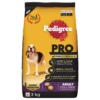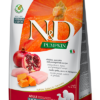Centronuclear Myopathy (CNM) is a rare but potentially debilitating inherited muscle disorder that affects certain breeds of dogs. In this comprehensive guide, we will explore the causes, symptoms, diagnosis, and management of CNM to help you better understand and care for your furry companion.
Causes of Centronuclear Myopathy:
CNM is primarily caused by a genetic mutation. It is an autosomal recessive disorder, which means that both parents must carry a copy of the mutated gene for the disease to manifest in their offspring. Breeds like Labrador Retrievers, Great Danes, and Labrador crosses are known to be at higher risk.
Symptoms of CNM:
The symptoms of Centronuclear Myopathy can vary in severity and typically become noticeable in affected dogs between 2 to 5 months of age. Common symptoms include:
- Muscle Weakness: Dogs with CNM often display muscle weakness, particularly in the hind limbs.
- Exercise Intolerance: They may tire easily during physical activity or exhibit a reluctance to exercise.
- Abnormal Gait: A distinctive “bunny-hopping” gait, where the hind legs move in unison, is a hallmark of CNM.
- Muscle Atrophy: Affected dogs may have reduced muscle mass, especially in the thigh and pelvic muscles.
- Difficulty Swallowing: CNM can lead to difficulty in swallowing, which may result in regurgitation.
- Breathing Issues: In severe cases, dogs may have difficulty breathing due to respiratory muscle weakness.
Diagnosis:
If you suspect CNM in your dog due to the presence of symptoms, it’s crucial to consult a veterinarian. Diagnosis typically involves a combination of the following:
- Physical Examination: Your vet will perform a thorough physical exam to assess muscle strength and gait abnormalities.
- Genetic Testing: A DNA test can confirm the presence of the CNM mutation in at-risk breeds, helping with early diagnosis.
- Muscle Biopsy: In some cases, a muscle biopsy may be necessary to examine muscle tissue microscopically.
Management and Treatment:
While there is no cure for CNM, there are ways to manage and improve the quality of life for affected dogs:
- Medications: Some medications may help manage symptoms and improve muscle function. Consult your veterinarian for appropriate prescriptions.
- Physical Therapy: Physical therapy and tailored exercise programs can maintain muscle strength and improve mobility.
- Dietary Management: Specialized diets may be recommended to support muscle health and overall well-being.
- Assistive Devices: Mobility aids such as slings or carts can help dogs with severe muscle weakness remain active.
- Regular Veterinary Check-Ups: Frequent check-ups allow your veterinarian to monitor your dog’s condition and adjust the treatment plan as needed.
Conclusion:
Centronuclear Myopathy is a challenging condition, but with proper care, affected dogs can enjoy a good quality of life. Early diagnosis, supportive treatment, and a loving home environment can make a significant difference in managing CNM and ensuring your dog’s well-being.





